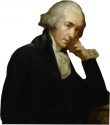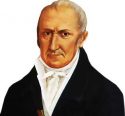 Sir William Thomson, also called Lord Kelvin, was a well-known mathematician and engineer. His work on mathematical analysis of electricity is one of his finest works. Besides, his important role in introducing a law on heat and Temperature is valid in physics to this date. Moreover, he is also known as a telegraph engineer. And his expertise in the field of safety at sea also left an impact. Moreover, he was also awarded the Smith Prize due to his notable work in physics and mathematics.
Sir William Thomson, also called Lord Kelvin, was a well-known mathematician and engineer. His work on mathematical analysis of electricity is one of his finest works. Besides, his important role in introducing a law on heat and Temperature is valid in physics to this date. Moreover, he is also known as a telegraph engineer. And his expertise in the field of safety at sea also left an impact. Moreover, he was also awarded the Smith Prize due to his notable work in physics and mathematics.
Biography – Lifespan
William Thomson (Lord Kelvin) was born in June 1824 at Belfast, Ireland. He was the Scottish-Irish Physicist. He was the son of James Thomson who used to teach both mathematics and engineering at the Royal Belfast Academic Institution. William Thomson got early training from his father.
He spent most of his early life in Germany and Netherland, where he learned many languages. He got his early education at the University of Glasgow. After receiving his early education, he went to Cambridge in 1841. He was very much interested in mathematical and scientific methods of France, so he traveled to Paris.
William Thomson (Lord Kelvin) was excellent research and has published over 650 papers in his lifetime. The papers were mostly related to thermodynamics, geophysics, and telegraphy. Because of his high potential, he introduced around 70 new inventions in various fields. Also, he earned the honor of the youngest Chair of natural philosophy at the age of 22 at the University of Glasgow. Moreover, Thomson Williamson (Lord Kelvin) was a strong believer in Christianity in his entire life. At last, he died due to heart disease, on 17th December 1907, at the age of 83 years, near Largs in Scotland.
Contribution and Discoveries
William Thomson’s valuable contribution to the field of Physics and Mathematics are well known. His Work has been acknowledged and greatly accepted throughout the history of mankind. There are few of his valuable contributions and discoveries which are given below.
- William Thomson was the one who introduced the updated, modern, and creative style in teaching while training at the University of Glasgow. In his teaching work, laboratory work was also included in which a unique method was adapted by him to make others learn easily.
- William Thomson also found the absolute value of the temperature below which the temperature can’t drop. He called the lowest point of temperature as absolute zero which is at -273.15°C. Also, his lowest point of temperature was later started to measure with a new temperature scale called “Kelvin” in his honor. For your information, -273.15 °C temperature is equal to 0 K (Kelvin).
- William Thomson also took part in the making of telegraphic and navigational instruments.
- He is also credited for a very famous book, Treatise on Natural Philosophy, which wrote along with his fellow Peter Guthrie.
Interesting Facts
- William Thomson was elected as the President of the Royal Society after having served a long time as a fellow of the Royal Society.
- He also won Copley Medal in 1883 from the Royal Society for his extraordinary achievements in science.
- William Thomson’s papers were considered as ideal texts by many scientists.





